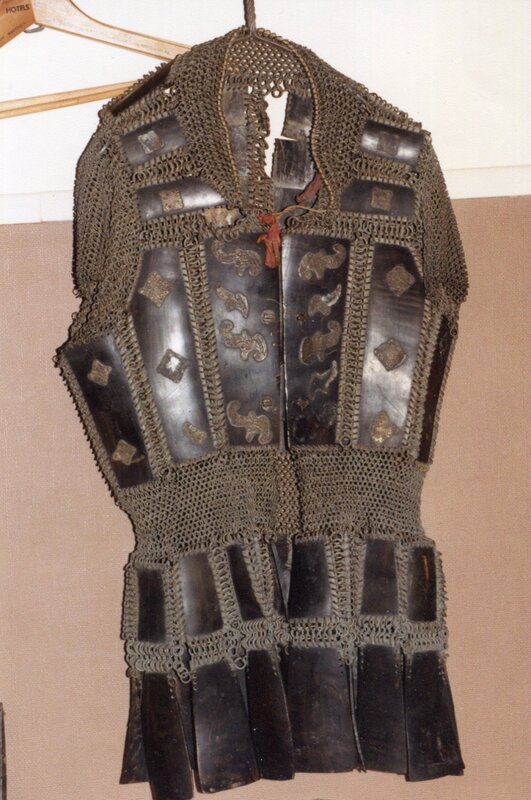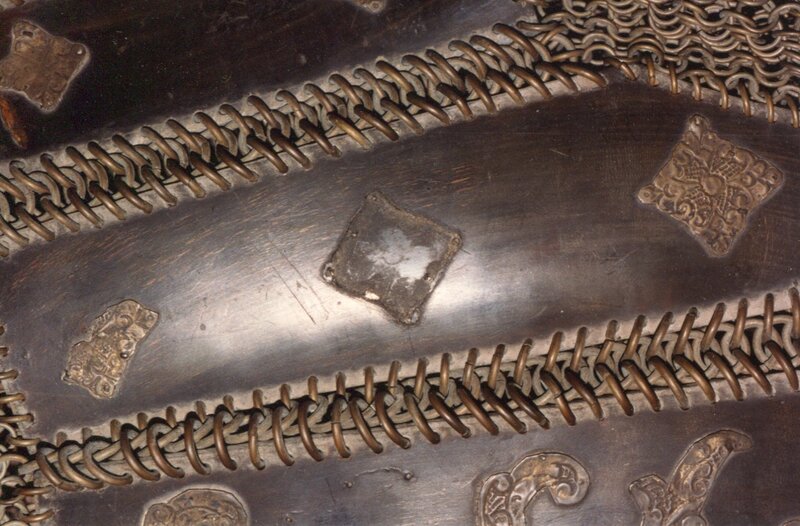[Kurab-a-kulang (mail and plate armor shirt)]
Item
-
Title
-
[Kurab-a-kulang (mail and plate armor shirt)]
-
Creator
-
Bangsamoro people (Moro nation)
-
Date
-
18thC-19thC (early)
-
Description
-
Kurab-a-kulang armor breastplate, crafted using multi-layered carabao horn sheets interconnected with brass mesh fabric. Front-fastening, with metal decoration.
The Tausug (Moro) inhabitants of Mindanao Island in the Philippines wore this style of armor during the Moro Rebellion (1901–1913). The Moro communities had hoped that with the Philippines' liberation from Spanish rule, they would achieve self-governance. However, they resisted the American annexation, which commenced in 1899. Even though President Theodor Roosevelt (1901–1909) declared an end to the Philippine-American War on July 4, 1902, this proclamation did not include the southern Moro communities. These communities continued their opposition against the U.S. forces.
By 1902, American officials in the Philippines were already organizing exhibits for the Louisiana Purchase Exposition, more commonly referred to as the 1904 World’s Fair, in St. Louis, Missouri. A standout exhibit was the “Moro village.” The Governor-General of the Philippines, William Howard Taft, penned a circular letter to the Exposition Committee. In it, he invited all military and administrative personnel in the Philippines and urged them to work together to curate outstanding displays. These exhibits were intended to comprehensively represent the historical evolution and the contemporary economic and societal conditions of the Philippines.
This item was donated to Lafayette College by a professor, whose father participated in the Philippine-American War.
-
Rights
-
In Copyright
-
Source
-
Lafayette College, Special Collections and College Archives
-
Bibliographic Citation
-
Unknown artist, Kurab-a-kulang, n.d, carabao horn, brass, metal. Special Collections and College Archives, Lafayette College, Easton, PA.


















